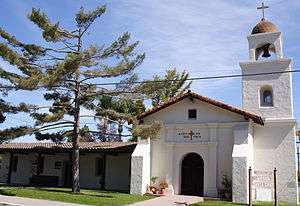Awaswas people

The Awaswas people,are also known as Santa Cruz people, are one of eight divisions of the Ohlone (Costanoan) Native Americans of Northern California. The Awaswas lived in the Santa Cruz Mountains and along the coast of present-day Santa Cruz County from present-day Davenport to Aptos.
Historically, they spoke the Awaswas language, one of the Costanoan language dialects in the Utian family, which became the main language spoken at the Mission Santa Cruz. However, there is evidence that this grouping was more geographic than linguistic, and that the records of the 'Santa Cruz Costanoan' language in fact represent several diverse dialects.
The Awaswas territory was bordered by the Pacific Ocean to the west, and other Ohlone people on all other sides: the Ramaytush to the north, Tamyen to the east, and the Mutsun and Rumsien to the south. The Awaswas population living between Davenport and Aptos was estimated at 600 people in 1770.[1]
Mission Era history
During the era of Spanish missions in California, the Awaswas people's lives changed with the Mission Santa Cruz (founded in 1791) built in their territory. Most moved into this mission and were baptized, lived and educated to be Catholic neophytes, also known as Mission Indians, until the missions were discontinued by the Mexican Government in 1834.
Awaswas tribes and villages
The villages included the Sokel, who lived at Aptos, and the Chatu-mu, who lived near the current location of Santa Cruz.[2]
Awasawas neophytes at the Mission Santa Cruz came from the following villages, located in today's Santa Cruz County:
Achilla, Aestaca, Agtisrn, Apil, Aulintac, Chalumü, Chanech, Chicutae, Choromi, Coot, Hauzaurni, Hottrochtac, Huachi, Hualquilme, Huocom, Locobo, Luchasmi, Mallin, Nohioalli, Ochoyos, Onbi, Osacalis (Souquel), Payanmin, Sachuen, Sagin, Shiuguermi, Shoremee, Sio Cotchmin, Tejey, Tomoy, Turami, Utalliam, Wallanmi, Yeunaba, Yeunata, Yeunator.[3]
In 2011, a march was held in Santa Cruz to preserve "the Knoll", the 6,000-year-old burial site of a child, located near Branciforte Creek.[4]
Awaswas people, the "documented descendants of Missions San Juan Bautista and Santa Cruz", have become members of the Amah Mutsun Tribal Band.[5] In 2012, Amah Mutsun Tribal Chairman Valentin Lopez stated that "tribe members are scattered. Few can afford to live in their historic lands today," and many now make their homes in the Central Valley.[6]
See also
Notes
- ↑ Robert Cartier. "An Overview of Ohlone Culture: excerpt, originally called "Ethnographic Background", from a 1991 report titled, The Santa's Village Site CA-SCr=239.". Santa Cruz Public Library. Retrieved 2012-12-23.
- ↑ Kroeber, 1925, Map p. 465
- ↑ "History of Santa Cruz Mission". Access Genealogy. Retrieved 2012-12-23.
- ↑ "Save the Knoll - Ohlone speaking event in Santa Cruz". Indybay, Santa Cruz IMC. Retrieved 2012-12-23.
- ↑ "Archaeological Society/Dig-It Club Meeting". Santa Cruz Good Times. 2012-11-15. Archived from the original on 2014-04-09. Retrieved 2012-12-23.
- ↑ Donna Jones (2012-12-21). "Healing ceremonies recall California Mission heritage". Santa Cruz Sentinel. Retrieved 2012-12-23.
References
- Kroeber, Alfred L. 1925. Handbook of the Indians of California. Washington, D.C: Bureau of American Ethnology Bulletin No. 78. (map of villages, page 465)
- Milliken, Randall. A Time of Little Choice: The Disintegration of Tribal Culture in the San Francisco Bay Area 1769-1910 Menlo Park, CA: Ballena Press Publication, 1995. ISBN 0-87919-132-5 (alk. paper)
- Teixeira, Lauren. The Costanoan/Ohlone Indians of the San Francisco and Monterey Bay Area, A Research Guide. Menlo Park, CA: Ballena Press Publication, 1997. ISBN 0-87919-141-4.
- Yamane, Linda, ed. 2002. A Gathering of Voices: The Native Peoples of the Central California Coast. Santa Cruz County History Journal, Number 5. Santa Cruz, CA: Museum of Art & History. ISBN 0-940283-11-5